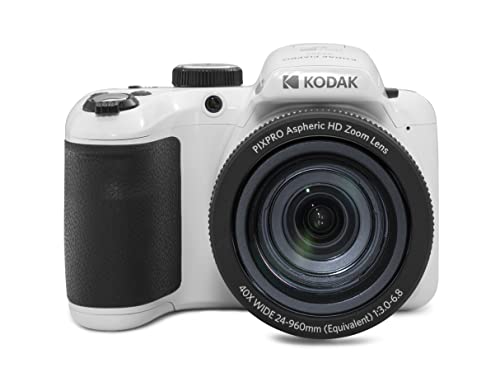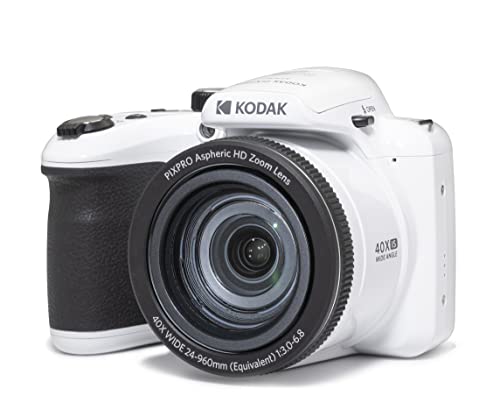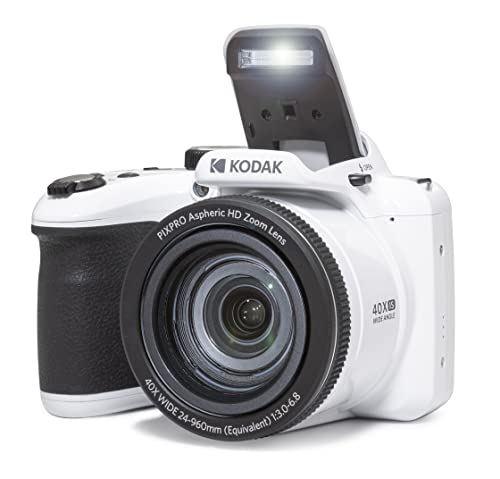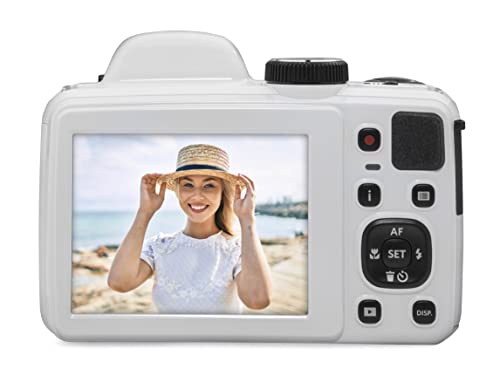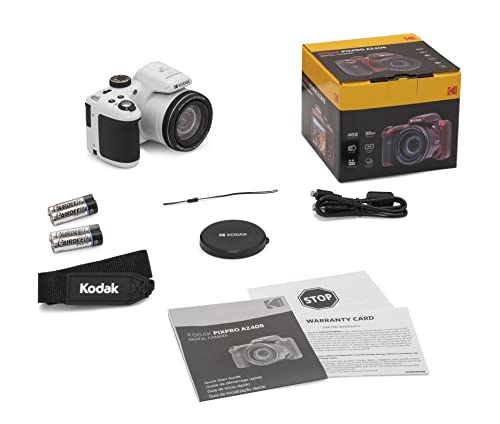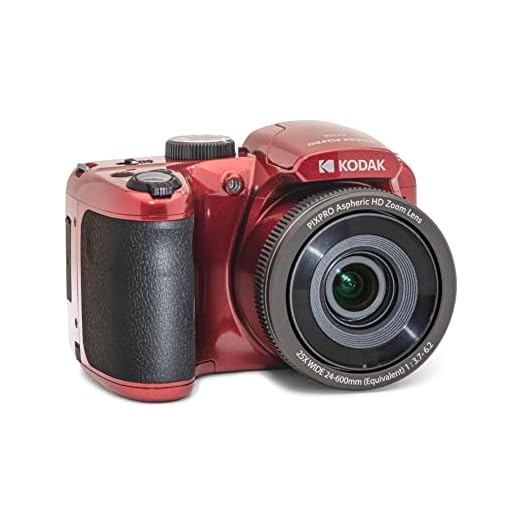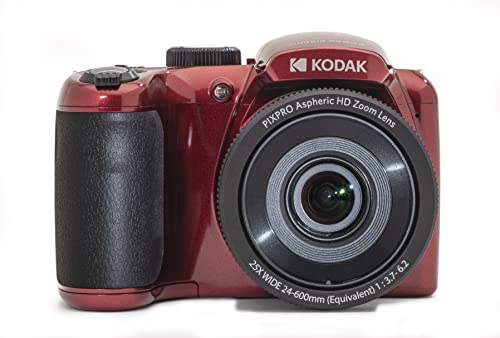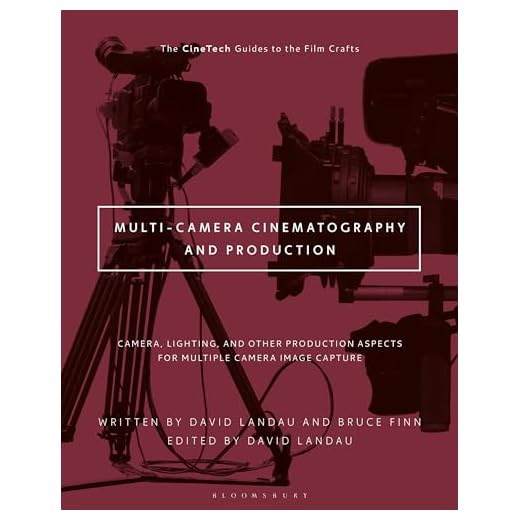
As an avid photographer, I have tried and tested many digital cameras over the years. From point-and-shoot models to DSLRs, I have experienced the pros and cons of various types of cameras. After careful consideration, I can confidently say that the best kind of digital camera is a mirrorless camera.
Mirrorless cameras offer a perfect combination of portability and image quality. Unlike DSLRs, they do not have a mirror mechanism, which makes them much lighter and more compact. This makes them ideal for travel and outdoor photography, as they are easy to carry around without compromising on image quality.
One of the key advantages of mirrorless cameras is their ability to provide real-time feedback through an electronic viewfinder. This allows photographers to see exactly how their image will turn out before they press the shutter button. Additionally, mirrorless cameras often have a wider range of autofocus points, allowing for more precise and accurate focusing.
Furthermore, mirrorless cameras have been rapidly improving in terms of image quality and low-light performance. Many models now come with full-frame sensors, which provide excellent dynamic range and low noise levels even in challenging lighting conditions. This means that photographers can capture stunning images with rich colors and fine details.
In conclusion, the best kind of digital camera is a mirrorless camera. Its combination of portability, image quality, and advanced features make it the top choice for photographers of all skill levels. Whether you are a professional looking for a compact secondary camera or an amateur looking to upgrade, a mirrorless camera is definitely worth considering.
Best Kind of Digital Camera: A Comprehensive Guide
When it comes to choosing a digital camera, you’ll find a wide variety of options available on the market today. With so many different types and features to consider, it can be overwhelming to make a decision. However, by understanding your specific needs and preferences, you can determine the best kind of digital camera for you.
1. DSLR Cameras: If you are looking for professional-level image quality and flexibility, a digital single-lens reflex (DSLR) camera is the way to go. These cameras offer interchangeable lenses, large image sensors, and manual control over settings. They are ideal for photographers who want full creative control and the ability to capture high-resolution images.
2. Mirrorless Cameras: Mirrorless cameras have gained popularity in recent years due to their compact size and impressive image quality. They offer similar features to DSLRs, such as interchangeable lenses and manual controls, but lack the bulky mirror mechanism found in DSLRs. Mirrorless cameras are great for those who want high-quality images but prefer a smaller and lighter camera body for portability.
3. Point-and-Shoot Cameras: If convenience and simplicity are your top priorities, a point-and-shoot camera may be the best choice for you. These compact cameras are easy to use and offer automatic settings that make capturing great photos a breeze. While point-and-shoot cameras may not have the same image quality or versatility as DSLRs or mirrorless cameras, they are perfect for everyday photography and on-the-go snapshots.
Other Factors to Consider:
- Budget: Consider your budget and choose a camera that fits within your price range. Remember that additional accessories, such as lenses and camera bags, may also add to the overall cost.
- Your Photography Needs: Think about what types of photography you will be doing most often. Are you interested in landscape photography, portraits, or sports photography? Different cameras excel in different areas, so consider the specific features that will support your photography goals.
- User-Friendliness: If you are new to photography or prefer a more intuitive camera, look for models that offer easy-to-use controls and menus. Some cameras even have built-in guides or tutorials to help you get started.
- Connectivity Options: Do you plan on sharing your photos online or transferring them to a computer easily? Consider cameras with Wi-Fi or Bluetooth capabilities for quick and convenient photo sharing.
By considering these factors and understanding the different types of digital cameras available, you can make an informed decision and choose the best kind of digital camera that suits your needs and preferences.
Understanding Different Types of Digital Cameras
As a photography enthusiast, it is essential to understand the different types of digital cameras available in the market today. Each type of camera has its own unique features, capabilities, and limitations, which can greatly impact the quality and style of your photographs.
Point-and-Shoot Cameras: These cameras are compact and easy to use, making them a popular choice for beginners or those who simply want to capture everyday moments. They have automatic settings, allowing you to focus on framing the shot rather than worrying about technical settings. However, point-and-shoot cameras often have limited manual controls and a smaller sensor size, which can affect image quality, especially in low-light conditions.
Mirrorless Cameras: Mirrorless cameras offer a balance between compactness and advanced features. They are similar in size to point-and-shoot cameras but offer the ability to change lenses and have larger sensors, resulting in better image quality. Mirrorless cameras also provide manual control options, making them ideal for photographers who want more creative control over their images. However, these cameras can be more expensive than point-and-shoot models.
DSLR Cameras: DSLR cameras are commonly used by professional photographers and advanced enthusiasts. They offer the highest level of image quality, thanks to their large sensors and interchangeable lenses. DSLRs also provide extensive manual control options, allowing photographers to fine-tune settings to achieve their desired results. However, DSLRs tend to be bulkier and heavier than other camera types, making them less portable for everyday use. They also tend to be more expensive.
In conclusion, understanding the different types of digital cameras is crucial in selecting the right one for your photography needs. Whether you are a beginner or an experienced photographer, there is a camera out there that can help you capture stunning images. Consider your budget, desired level of control, and portability when choosing the best digital camera for you.
DSLR Cameras
If you are serious about photography and want to take your skills to the next level, a DSLR camera is definitely the way to go. DSLR stands for Digital Single Lens Reflex, and these cameras offer the ultimate in versatility and image quality.
One of the main advantages of DSLR cameras is their ability to change lenses. This allows you to adapt to different shooting situations and achieve a wide range of creative effects. Whether you’re capturing landscapes, portraits, or action shots, having a variety of lenses gives you the flexibility to get the perfect shot every time.
The image quality of DSLR cameras is another key factor that sets them apart. With larger image sensors and advanced image processing technology, DSLRs are capable of capturing sharp, detailed, and vibrant images even in challenging lighting conditions. This is especially important for photographers who want to print their photos in large formats or make professional-quality prints.
Another feature that makes DSLR cameras highly desirable is their ability to shoot in RAW format. RAW files contain all the data captured by the camera’s image sensor, providing greater control over image editing and post-processing. This means you can fine-tune exposure, white balance, and other settings without sacrificing image quality.
In addition to superb image quality, DSLR cameras also offer advanced autofocus systems, fast shutter speeds, and the ability to shoot in continuous mode, making them ideal for capturing fast-moving subjects like wildlife or sports events.
While DSLR cameras may be bulkier and heavier compared to other types of digital cameras, their exceptional performance, extensive features, and the opportunity for creative expression make them the best choice for serious photographers.
Mirrorless Cameras
When it comes to choosing the best kind of digital camera, mirrorless cameras are definitely worth considering. These cameras offer a number of advantages over traditional DSLRs, making them a popular choice among professional photographers and enthusiasts alike.
One of the main advantages of mirrorless cameras is their compact size and lightweight design. Unlike DSLRs, which have a bulky mirror and prism system, mirrorless cameras use a digital viewfinder that eliminates the need for these extra components. This results in a smaller and lighter camera that is easier to carry around, making it ideal for travel photography or any situation where portability is important.
Another key advantage of mirrorless cameras is their autofocus system. Many mirrorless cameras use contrast-detection autofocus, which allows for faster and more accurate focusing. This is particularly beneficial when photographing moving subjects or capturing fast-paced events. Additionally, mirrorless cameras often have advanced features such as eye autofocus, which automatically detects and focuses on the subject’s eyes, ensuring that they are always in sharp focus.
Point-and-Shoot Cameras
Flexible and Versatile
One of the key advantages of point-and-shoot cameras is their flexibility and versatility. They are designed to be compact and portable, allowing you to easily carry them with you wherever you go. This means you can capture spontaneous moments and candid shots without the need for bulky equipment. Point-and-shoot cameras are also equipped with a variety of shooting modes and settings, allowing you to adjust the settings based on the lighting conditions and the subject you’re photographing. Whether you’re shooting landscapes, portraits, or close-ups, a point-and-shoot camera can handle it all.
User-Friendly Design
Another highlight of point-and-shoot cameras is their user-friendly design. These cameras are designed with simplicity in mind, with intuitive controls and menus that are easy to navigate. They typically have automatic settings that take care of the technical details for you, allowing you to focus on capturing the moment. Many point-and-shoot cameras also come with built-in features like image stabilization, which helps reduce blur caused by camera shake. This ensures that your photos are sharp and clear, even in challenging shooting conditions.
In conclusion, point-and-shoot cameras are a fantastic choice for anyone looking for a compact and versatile camera that is easy to use. With their flexibility, ease of use, and convenient features, these cameras are perfect for capturing everyday moments and creating lasting memories.
Action Cameras
When it comes to capturing fast-paced activities and adventurous moments, action cameras are the go-to choice for many. These compact and rugged cameras are designed to withstand extreme conditions, making them perfect for outdoor enthusiasts and adrenaline junkies alike.
Durability and Portability
Action cameras are known for their durability and portability. They are built to withstand water, dust, shocks, and even extreme temperatures, allowing users to take them to places where traditional cameras would fear to go. With their compact size and lightweight design, action cameras can easily be mounted on helmets, surfboards, or handlebars, ensuring that you never miss a moment of the action.
High-Quality Footage
One of the standout features of action cameras is their ability to capture high-quality footage. These cameras are equipped with wide-angle lenses that allow for a broader field of view, ensuring that you can capture all the action happening around you. Additionally, action cameras are capable of recording in high resolutions such as 4K or even higher, producing stunningly detailed videos that will make you feel like you’re reliving the moment.
Versatility and Features
Action cameras come packed with a range of features that make them incredibly versatile. They often have built-in Wi-Fi or Bluetooth capabilities, allowing you to easily connect them to your smartphone or tablet for quick and easy sharing of your adventures. Many action cameras also offer different shooting modes, such as time-lapse or burst mode, giving you the flexibility to capture your footage in a variety of creative ways. Some models even have built-in image stabilization technology, ensuring that your videos are smooth and shake-free.
Conclusion
If you’re someone who loves outdoor activities and wants to capture those thrilling moments, an action camera is a must-have. With their durability, portability, and ability to capture high-quality footage, action cameras are the perfect companion for all your adventures.
Why Compact System Cameras are the Best Choice for Photography Enthusiasts
As a photography enthusiast, I have always been on the lookout for the best kind of digital camera that can meet my needs. After trying out various options, I have come to the conclusion that compact system cameras are the ultimate solution for capturing high-quality images. These cameras have revolutionized the world of photography with their compact size, interchangeable lenses, and advanced features.
One of the main advantages of compact system cameras is their small and lightweight design. Unlike traditional DSLR cameras, which can be bulky and heavy, compact system cameras are portable and easy to carry around. This makes them perfect for travel photography, as they allow me to capture stunning images without the burden of heavy equipment.
Another feature that sets compact system cameras apart is their ability to use interchangeable lenses. This gives me the flexibility to choose the lens that best suits my specific needs, whether it’s a wide-angle lens for landscape photography or a telephoto lens for capturing distant subjects. The versatility of these cameras allows me to experiment with different styles of photography and push the boundaries of my creativity.
Additionally, compact system cameras are equipped with advanced features that enhance the overall photography experience. They offer a wide range of shooting modes, manual controls, and image stabilization technology, allowing me to capture sharp and clear images in various conditions. Some models even have built-in Wi-Fi connectivity, enabling me to instantly transfer and share my photos with friends and family.
In conclusion, as a photography enthusiast, I firmly believe that compact system cameras are the best choice for capturing high-quality images. Their small size, interchangeable lenses, and advanced features make them a versatile and powerful tool for any photographer. Whether you’re a beginner or a professional, compact system cameras are sure to meet and exceed your expectations.
Factors to Consider When Choosing a Digital Camera
When it comes to choosing a digital camera, there are several important factors to consider. The right camera for you will depend on your specific needs and preferences. Here are some key factors to keep in mind:
1. Image Quality
One of the most important factors to consider when choosing a digital camera is the image quality it produces. Look for a camera with a high number of megapixels, as this will determine the level of detail and sharpness in your photos. Additionally, consider other factors such as the sensor size and the camera’s ability to handle low light conditions. A camera that produces high-quality images will allow you to capture your memories in the best possible way.
2. Zoom and Lens Options
The zoom and lens options available on a digital camera are crucial for capturing different types of shots. If you plan on taking close-up photos or wildlife photography, you’ll want a camera with a good zoom lens. Consider whether you prefer an optical zoom or a digital zoom, as each has its advantages and disadvantages. Additionally, look for a camera with interchangeable lenses if you want to have more flexibility and control over your photography.
3. Size and Portability
The size and portability of a digital camera are important factors to consider. If you plan on carrying your camera with you everywhere you go, a compact and lightweight option may be more suitable. On the other hand, if you prioritize image quality and advanced features over portability, a larger DSLR camera may be the better choice. Consider your intended usage and how important portability is to you when making your decision.
4. Features and Performance
When choosing a digital camera, consider the features and performance it offers. Look for options such as image stabilization, autofocus speed, burst mode, and video recording capabilities. Consider whether you need advanced features like manual controls or if a point-and-shoot camera will suffice. Additionally, read reviews and compare the performance of different cameras to ensure that they meet your specific requirements.
5. Price
Finally, consider your budget when choosing a digital camera. Prices can vary significantly depending on the brand, model, and features of the camera. Determine how much you are willing to spend and find a camera that offers the best value for your money. Remember that while more expensive cameras often have better image quality and advanced features, there are also affordable options that can still meet your needs.
By considering these factors and comparing different cameras, you can find the best digital camera that suits your needs and preferences. Whether you’re a beginner or a professional photographer, choosing the right camera is essential for capturing your moments with clarity and creativity.
Megapixels and Image Quality
When it comes to choosing the best kind of digital camera, one of the important factors to consider is the number of megapixels it offers. Megapixels determine the resolution of the images taken by the camera, and thus play a crucial role in determining the image quality. However, it is important to note that higher megapixels do not necessarily guarantee better image quality.
While a higher number of megapixels can result in sharper and more detailed images, other factors such as sensor size, lens quality, and image processing also have a significant impact on image quality. This means that even a camera with a lower number of megapixels can produce excellent image quality if it has a good sensor and lens combination.
It is important to strike a balance between the number of megapixels and other factors affecting image quality while choosing a digital camera. A higher number of megapixels can be beneficial if you often crop or enlarge your images, as it provides more room for editing and resizing without compromising the details. However, for everyday use and casual photography, a camera with moderate megapixels and good sensor and lens combination can provide satisfactory image quality.
In conclusion, while megapixels play a significant role in determining image resolution, they are not the only factor affecting image quality. Before making a decision, it is important to consider the overall camera specifications, including sensor size, lens quality, and image processing capabilities, to ensure the best possible image quality for your specific photography needs.
Sensor Size and Low-Light Performance
When it comes to low-light photography, the size of the camera’s sensor plays a crucial role in capturing quality images. The sensor’s size determines the amount of light it can gather, which directly affects the camera’s low-light performance.
Generally, cameras with larger sensors tend to perform better in low-light conditions compared to those with smaller sensors. Larger sensors have bigger pixels that can collect more light, resulting in less noise and better image quality.
Full-frame cameras have the largest sensors available in digital cameras. These cameras offer exceptional low-light performance, making them popular among professional photographers. Their large sensors allow for better light sensitivity and dynamic range, resulting in high-quality images even in dimly lit environments.
APS-C and Micro Four Thirds cameras have smaller sensors compared to full-frame cameras but still offer good low-light performance. These cameras are more affordable and compact, appealing to both enthusiasts and professionals. While they may not perform as well as full-frame cameras in extremely low-light conditions, they still capture high-quality images in most lighting situations.
Point-and-shoot cameras and smartphones, on the other hand, have much smaller sensors, limiting their low-light capabilities. While advancements in technology have improved their performance over the years, they still struggle in challenging lighting conditions. However, they are highly portable and convenient options for everyday photography.
In summary, the sensor size of a digital camera plays a significant role in its low-light performance. Full-frame cameras offer the best low-light capabilities, followed by APS-C and Micro Four Thirds cameras. Point-and-shoot cameras and smartphones have smaller sensors, making them less effective in low-light conditions. Consider your specific needs and budget when choosing a camera based on its low-light performance.
Best kind of digital camera
Features
| Part Number | 26837074 |
| Is Adult Product | |
| Edition | 1 |
| Language | English |
| Number Of Pages | 400 |
| Publication Date | 2018-01-09T00:00:01Z |
| Format | Illustrated |
| Price history for Camera Image Quality Benchmarking (The Wiley-IS&T Series in Imaging Science and Technology) | |
|---|---|
|
Latest updates:
|
|
Features
| Part Number | 435-0005-03 |
| Model | 435-0005-03 |
| Warranty | 1 Year |
| Color | Camera Only |
| Size | 1 Count (Pack of 1) |
| Price history for FLIR ONE Gen 3 - Android (USB-C) - Thermal Camera for Smart Phones - with MSX Image Enhancement Technology, 1 Count (Pack of 1) | |
|---|---|
|
Latest updates:
|
|
| Price history for Single-Sensor Imaging: Methods and Applications for Digital Cameras (Image Processing Series) | |
|---|---|
|
Latest updates:
|
|
Features
| Part Number | AZ405-WH |
| Model | AZ405-WH |
| Warranty | 1 year manufacturer |
| Color | White |
| Release Date | 2022-11-05T00:00:01Z |
| Language | English |
| Price history for KODAK PIXPRO AZ405-WH 20MP Digital Camera 40X Optical Zoom 24mm Wide Angle Lens Optical Image Stabilization 1080P Full HD Video 3" LCD Vlogging Camera (White), Full Frame | |
|---|---|
|
Latest updates:
|
|
Features
| Part Number | RODIC20AMZW |
| Model | RODIC20AMZW |
| Warranty | 1 year limited warranty |
| Color | White |
| Is Adult Product | |
| Release Date | 2020-07-01T00:00:01Z |
| Language | English |
| Price history for Kodak Step Camera Instant Camera with 10MP Image Sensor, ZINK Zero Ink Technology, Classic Viewfinder, Selfie Mode, Auto Timer, Built-in Flash & 6 Picture Modes | White. | |
|---|---|
|
Latest updates:
|
|
Features
- 【Built-in Wi-Fi】The built-in hotspot module of the car dash cam allows you to view, change settings, download and shares footage directly from the app later opening and connecting the APP, and does not need to insert the card into the computer
- 【Loop Recording & G sensor】This car camera records footage in a loop, so you never have to worry about deleting old recordings to free up space for new ones. There is a built-in G-sensor that detects sudden crashes and shakes to lock footage and accidental erasure or overwriting.
- 【Car Front and car inside high-definition two lens】The front and rear lens high-definition night vision parking monitoring allows you to clearly understand the conditions of the vehicles in front of and behind at any time, and can clearly see them when moving forward and reversing. The camera in the car allows you to understand the conditions in the car at any time and record driving life.
- 【Night Vision & Parking Monitoring】This dash camera has great night vision capabilities that capture crisp details and colors, even in low-light environments. It also supports memory card for storing critical driving footage. It also features motion detection and a parking monitor mode to record your car’s surroundings at all times.
- 【Easy installation and easy operation】This HD lens dash cam,the installation and operation are easy, which can help you drive easily in various complicate traffic environments.
Features
| Part Number | AZ255-RD |
| Model | AZ255RD |
| Warranty | 1 year manufacturer |
| Color | Red |
| Release Date | 2022-11-05T00:00:01Z |
| Language | English |
| Price history for KODAK PIXPRO AZ255-RD 16MP Digital Camera 25X Optical Zoom 24mm Wide Angle Lens Optical Image Stabilization 1080P Full HD Video 3" LCD Vlogging Camera (Red) | |
|---|---|
|
Latest updates:
|
|
| Price history for Kitchbai 4K USB Document Camera for Teacher, 8MP Webcam & Visualiser for A3 Size with Dual Microphones, 3-Level LED Light, Image Invert, Foldable for Live Demo, Work with Windows, macOS and Chrome OS | |
|---|---|
|
Latest updates:
|
|
| Price history for KODAK Smile Classic Digital Instant Camera for 3.5 x 4.25 Zink Photo Paper - Bluetooth, 16MP Pictures (Black) | |
|---|---|
|
Latest updates:
|
|
Features
| Part Number | 9781501374654 |
| Release Date | 2024-01-25T00:00:01Z |
| Language | English |
| Number Of Pages | 248 |
| Publication Date | 2024-01-25T00:00:01Z |
| Price history for Multi-Camera Cinematography and Production: Camera, Lighting, and Other Production Aspects for Multiple Camera Image Capture (The CineTech Guides to the Film Crafts) | |
|---|---|
|
Latest updates:
|
|
Question and answers:
What is the best kind of digital camera?
The best kind of digital camera depends on your needs and preferences. However, some popular options include DSLR cameras for professional photographers, mirrorless cameras for a balance of versatility and portability, and point-and-shoot cameras for casual photographers.
What is a DSLR camera?
A DSLR camera, or Digital Single-Lens Reflex camera, is a type of digital camera that uses a mirror and prism system to direct light from the lens to the optical viewfinder. DSLRs are known for their high image quality, interchangeable lenses, and advanced manual settings.
What is a mirrorless camera?
A mirrorless camera is a type of digital camera that does not have a mirror and prism system like DSLRs. The light directly hits the image sensor and is displayed on an electronic viewfinder or the camera’s LCD screen. Mirrorless cameras are generally lighter and more compact than DSLRs, making them a popular choice for travel and street photography.
What is a point-and-shoot camera?
A point-and-shoot camera, also known as a compact camera, is a small, lightweight digital camera that is designed for simple and convenient use. These cameras usually have automatic settings and a fixed lens, making them great for everyday photography or for those new to photography.
What features should I look for in a digital camera?
When choosing a digital camera, it’s important to consider factors such as image quality, resolution, lens options, sensor size, low-light performance, autofocus performance, video capabilities, battery life, and overall usability. Additionally, consider your budget and intended use to find the best fit for your needs.














